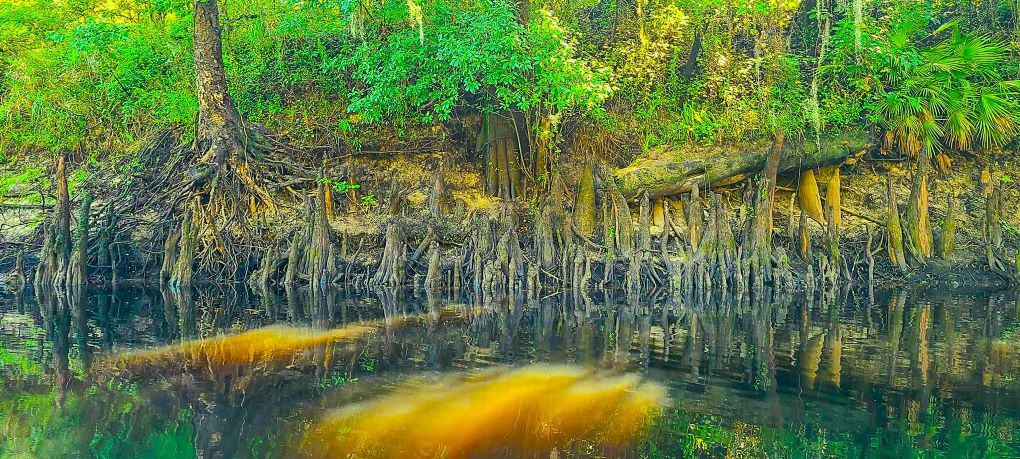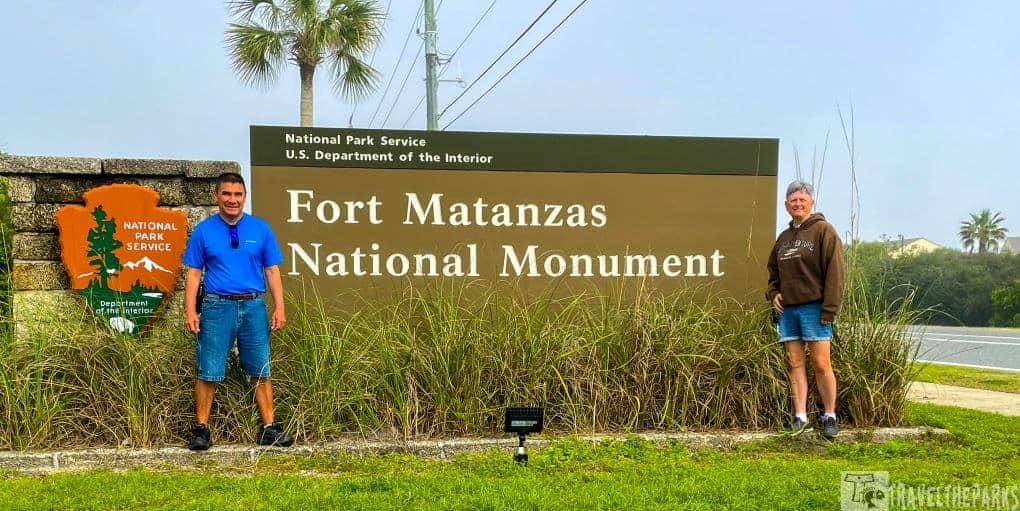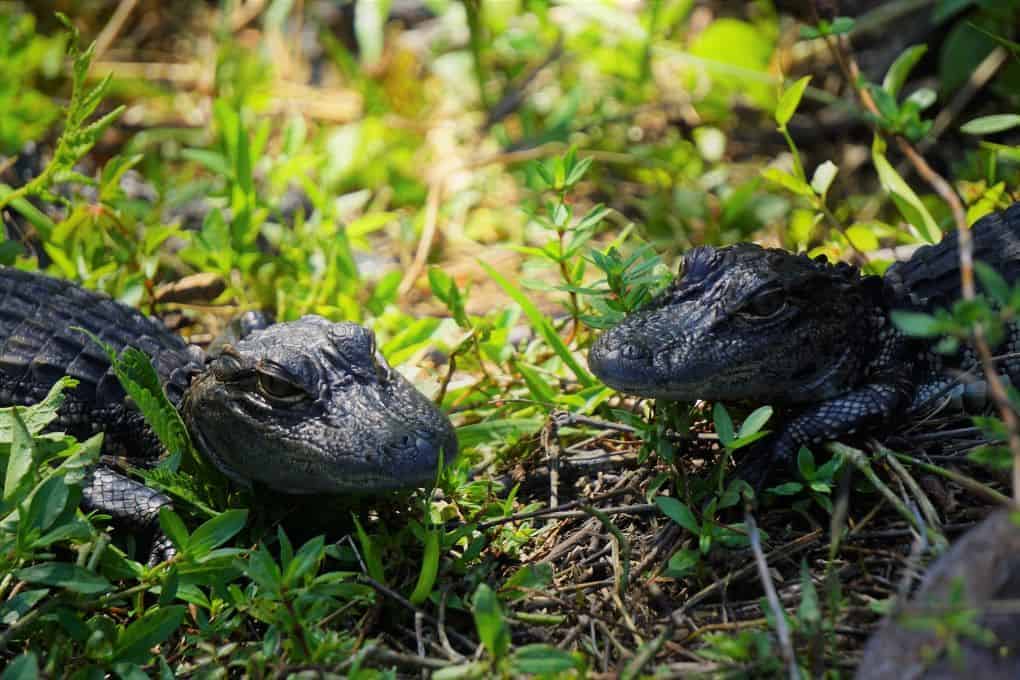Table of Contents
Updated October 2024
Green forests, enchanting springs, tannic rivers, and prairie preserves abound along Florida’s Nature Coast, making it ideal for a quiet getaway. A trip to Florida’s Nature Coast is a must for nature lovers, wildlife enthusiasts, history buffs, or anyone seeking relaxation. It’s an exceptional and beautiful part of Florida that offers something for everyone. A road trip along the Nature Coast gives visitors a chance to glimpse into history, seeing what “Old Florida” really is.
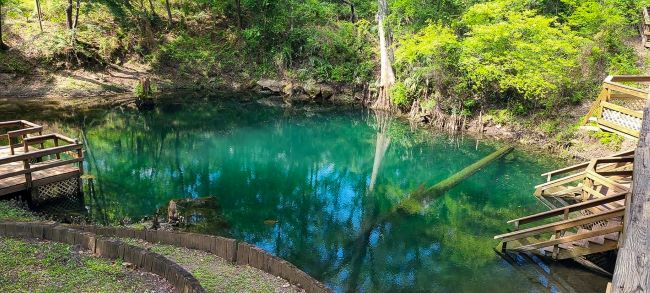
This post may contain affiliate links, meaning if you purchase something through one of these links, we may earn a small commission at no extra cost to you! Read the full disclosure policy here.
The Florida Nature Coast is a region along the northern Gulf of Mexico in the state of Florida. It stretches from Pasco County in the south to Wakulla County in the north and includes portions of the following counties: Citrus, Hernando, Levy, Dixie, Taylor, and Jefferson. Many of the trails comprise the Great Florida Birding Trail.

Traveling to the Nature Coast: Routes & Airports
If you’re driving from other parts of Florida or neighboring states, the Nature Coast can be easily reached via major highways such as I-75 or US-19. You can also take scenic routes such as the Tamiami Trail (US-41) or the Coastal Highway (US-98) to enjoy the beautiful scenery along the way.
The closest major airports to the Nature Coast are Tampa International Airport (TPA) and Orlando International Airport (MCO). From there, you can rent a car or take a shuttle service to your destination.
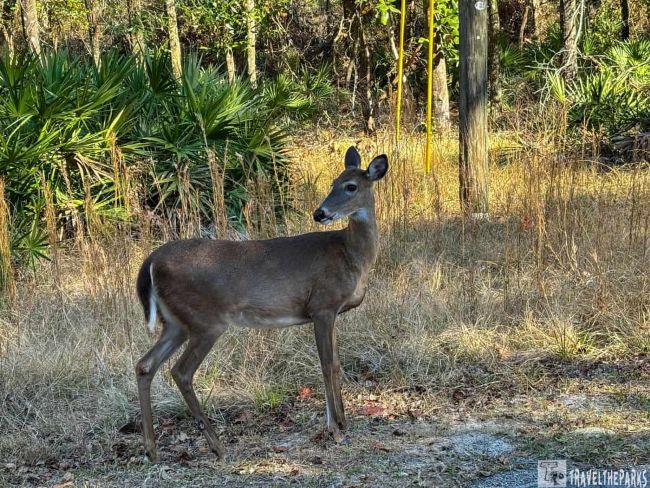
Why is it Called Florida’s Nature Coast?
Florida’s Nature Coast earned its name because it prioritizes the preservation of its natural beauty, wildlife, and outdoor activities over urban development and commercial tourism. This title was officially recognized in the 1990s as part of a marketing effort to promote tourism by highlighting the area’s untouched landscapes and abundant natural attractions. The most significant reason it’s known as the Nature Coast is because of its rich wildlife: manatees, dolphins, bald eagles, otters, and many birds.
- Springs and Rivers: Has world-famous freshwater springs like Weeki Wachee, Homosassa, and Manatee Springs that flow into the Gulf of Mexico.
- Environmental Tourist Recreation: Offers kayaking, scalloping, hiking, fishing, birding, and cave diving.
- Protected Land: Has several state parks, wildlife refuges, and protected estuaries, which maintain Florida’s natural beauty.
- Fewer Crowds: Compared to Florida’s urbanized coasts, it is more rural and underdeveloped—more wild and authentic.
- Location: The Nature Coast basically refers to Big Bend, Florida, an eight-county region of the Gulf Coast, including Citrus, Levy, Hernando, and Pasco.
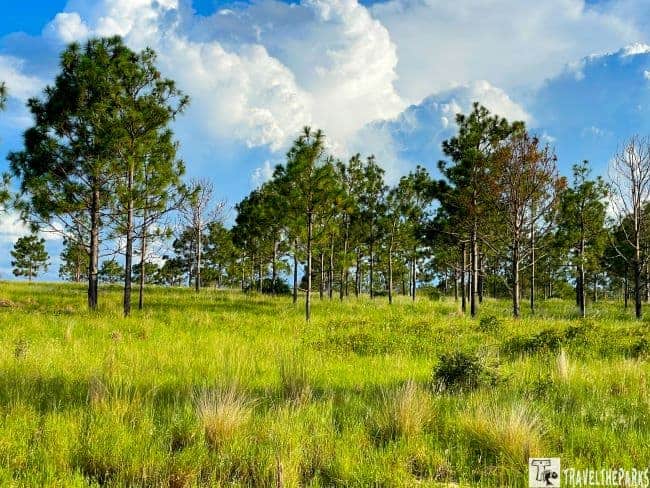
Nature Coast State Trail: The Ultimate Hike in Florida
The Nature Coast State Trail is a 32-mile long paved trail that runs through Florida’s Gulf Coast region, between the towns of Cross City and Trenton. This trail passes through a variety of landscapes, including pine forests, wetlands, and prairies, and offers scenic views of the surrounding natural beauty. The Nature Coast State Trail is also part of the larger Florida Greenways and Trails System, which is a network of trails and green spaces throughout the state.
The trail is open to hikers, cyclists, and horseback riders, and provides a special opportunity to explore the area’s wildlife and natural habitats. Along the way, visitors can stop at several trailheads, which offer amenities such as restrooms, picnic areas, and parking.
Hiking Reminder: wear comfortable shoes, bring plenty of water, and be prepared for Florida’s hot/humid weather.
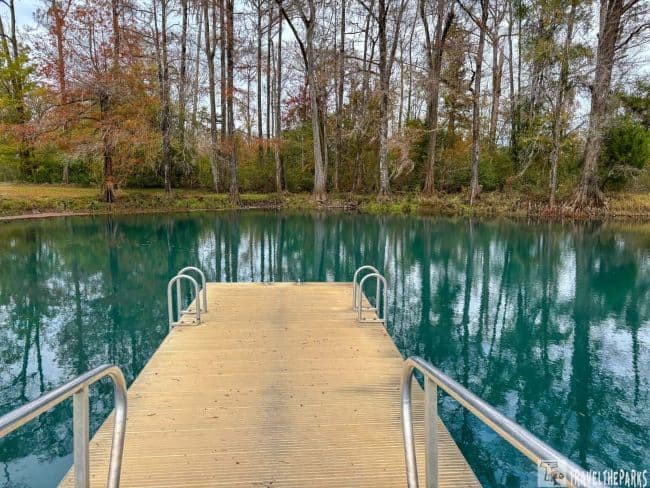
Discover the Amazing Springs of the Nature Coast
These springs are not just vital for wildlife; they also provide fun activities like swimming, snorkeling, kayaking, and tubing. In Florida, manatees can be found in several natural springs, especially in winter when the Gulf of Mexico and Atlantic Ocean get chilly. While Blue Springs State Park is the most famous, the springs along the nature coast have their own manatee populations. The warm, steady temperatures of the springs offer a haven for manatees, who are sensitive to cold and can get sick or even die if they stay in cold water for too long.
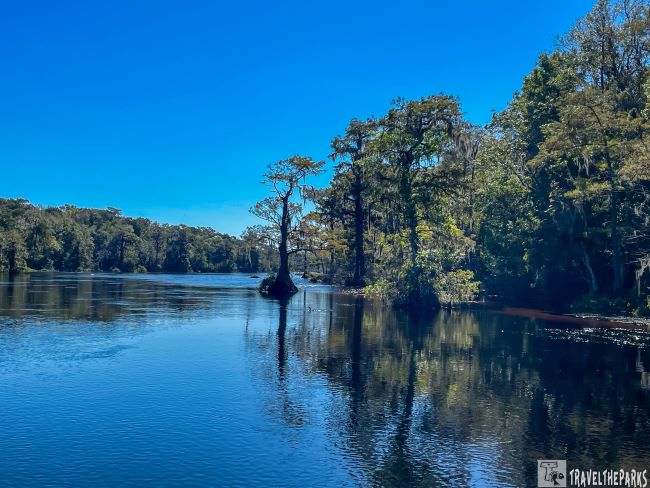
Preview of Florida’s Beautiful Edward Ball Wakulla Springs State Park
Wakulla Springs State Park, which is about 14 miles south of Tallahassee, Florida. The park covers approximately 6,000 acres. It is home to one of the largest and deepest freshwater springs in the world. With a depth of over 300 feet and an average discharge of over 250 million gallons of water per day. A Spanish lodge circa 1930s built by Edward Ball during Florida’s land boom years. Taking a tour of the lodge gives visitors a timeless glimpse into the glory days of the past. The beautiful period furnishings and elegant construction are worth seeing. They listed the lodge on the National Register of Historic Places in 1972.
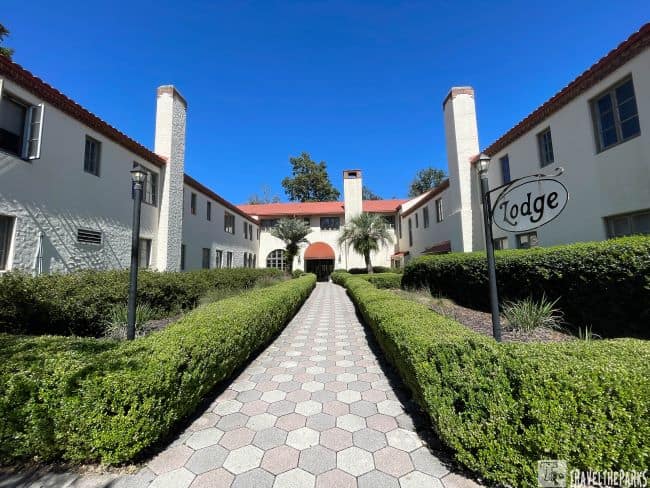
Ancient cypress trees that enhance the park’s natural beauty surround Edward Ball Wakulla State Park. It is easy to see why this was the ideal location for early films such as Tarzan’s Secret Treasure (1941) and Creature from the Black Lagoon (1954). To get a better perspective of the park, take a 45-minute guided riverboat tour. The spring and its surrounding waterways are teeming with wildlife, including alligators, river otters and wading birds. During the winter months, when the water temperature drops in the Gulf of Mexico, the spring attracts manatees.
Besides water activities, Wakulla Springs State Park also offers hiking trails, picnic areas, and horseback riding.

Fort Fanning Historic Park: History Along Florida’s Nature Coast
Fanning Springs State Park is best known for its crystal-clear spring, which stays a refreshing 72°F year-round. The spring features a designated swimming area, diving platform, and underwater caves for certified divers. Open year-round, the park offers family-friendly amenities including restrooms, showers, and a concession stand—making it a favorite spot to cool off and enjoy Florida’s natural beauty.Click Here for a park map.
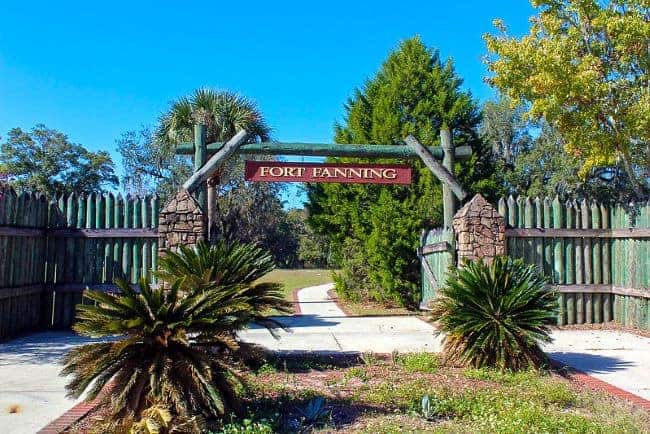
Just nearby, Fort Fanning Historic Park honors Lt. Colonel Alexander Campbell Fanning (1788–1846), a Florida militia officer during the Second Seminole War. Built in 1838 as a military supply depot along the Suwannee River, the original fort is gone, but visitors can explore a replica gate and learn about the area’s rich history in this peaceful riverside park.
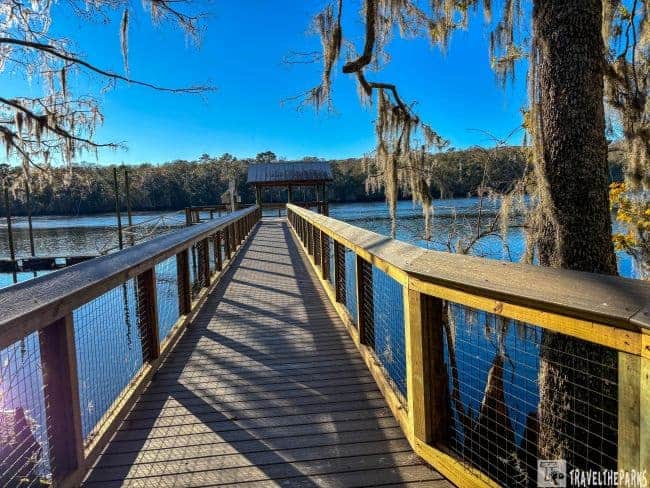
Manatee Springs: A Hidden Gem on Florida’s Nature Coast
We spent a long weekend camping in Levy County, at Manatee Springs State Park. It is a must-visit destination along Florida’s beautiful Nature Coast, especially in the cooler months. The spring’s crystal-clear waters attract manatees in the winter. The boardwalk offers incredible wildlife viewing opportunities. Visitors/campers can enjoy a variety of outdoor activities, including kayaking or canoeing along the Suwannee River, hiking shaded nature trails, snorkeling in the spring run (summer only), or enjoying a family picnic under ancient cypress trees. With its natural beauty and abundance of things to do, Manatee Springs is a perfect stop for nature lovers and adventure seekers alike.
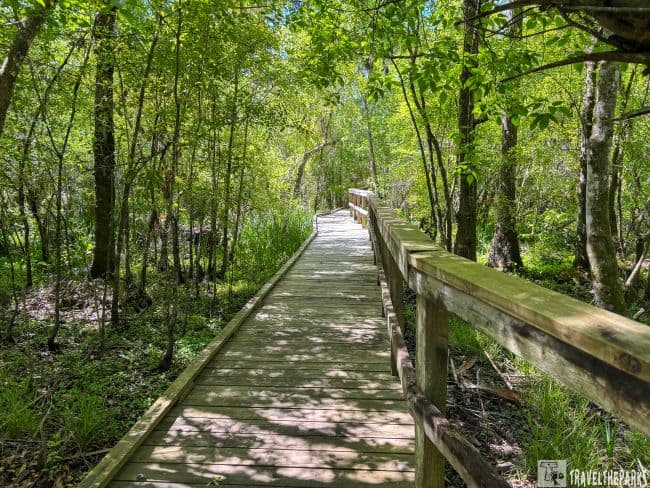
Lower Suwannee National Wildlife Refuge: A Coastal Wilderness
A total of 53,000 acres are protected by the Lower Suwannee National Wildlife Refuge, which is managed by the U.S. Fish and Wildlife Service. It was established in 1979 to protect the Lower Suwannee River, its wildlife, and ecologically sensitive habitat. If you’re into the REAL old Florida, then you will definitely catch glimpses of it here. The refuge’s visitor center offers exhibits, educational programs, and a bookstore, providing visitors with an opportunity to learn more about the area’s natural and cultural history.
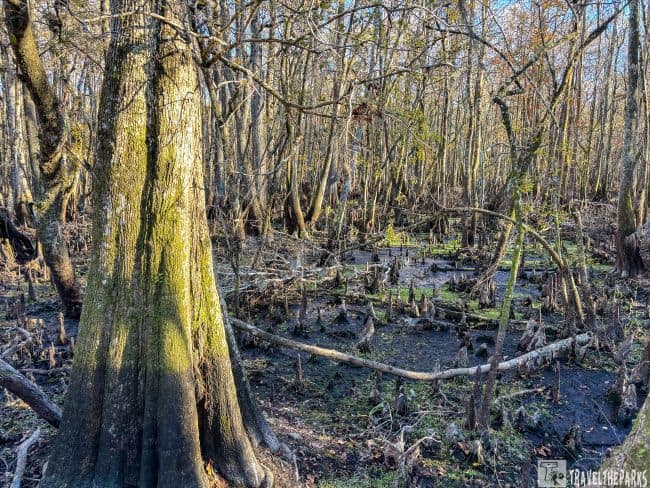
The Lower Suwannee National Wildlife Refuge is renowned for its scenic beauty, with pristine wilderness areas, crystal-clear waters, and dramatic rock formations. The area’s winding rivers and diverse ecosystems make it a truly exceptional and captivating landscape. A kayaker’s paradise. Whether you’re a seasoned paddler or a beginner, there are sections of the river that can accommodate your skill level and provide a memorable adventure.
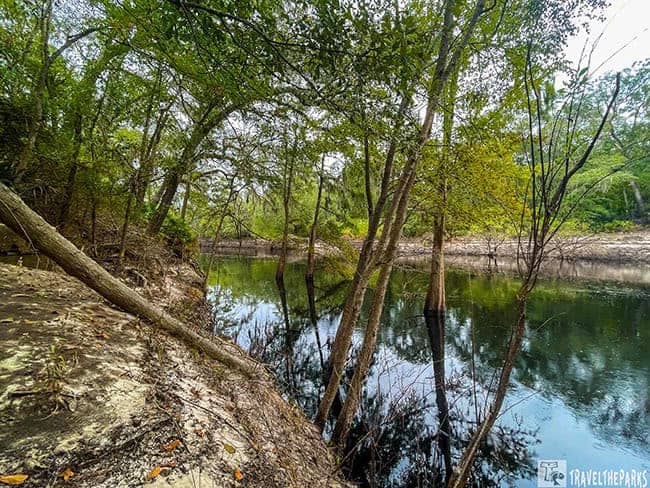
PRO Tip: Depending on where you plan to launch your kayak and how long you plan to stay on the river, you may need to have a permit. Permits are available from the Florida Fish and Wildlife Conservation Commission.
Among the wildlife found at the refuge are river otters, alligators, deer, and a variety of birds. In addition to providing critical habitat for threatened and endangered species such as the West Indian manatee and the wood stork, it is an important stopover site for migrating birds.
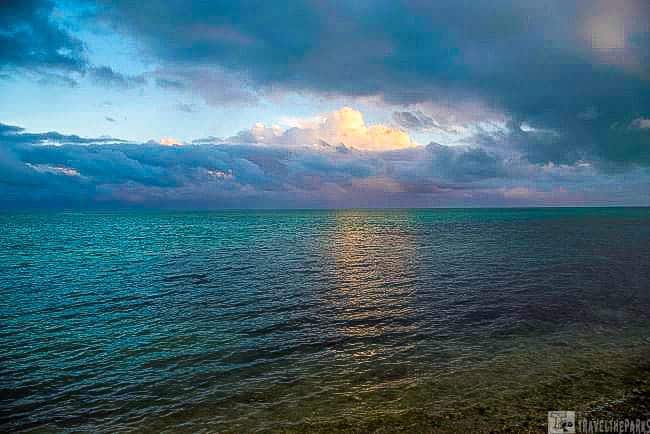
Visit Cedar Key: A Timeless Treasure on Florida’s Nature Coast
We spent the weekend on Cedar Key, and it felt like discovering a hidden gem along Florida’s Nature Coast. This quiet island town, with its weathered docks and pastel buildings, welcomed us with a peaceful charm we hadn’t felt in ages. We wandered through local art shops, shared fresh Gulf oysters by the water, and watched the sun dip below the horizon in a blaze of color. During the day, we paddled through the calm estuaries and explored the Cedar Keys National Wildlife Refuge, spotting birds and soaking in the natural beauty. Cedar Key was the perfect unplugged getaway—simple, slow, and just what we needed.

Exploring Nature’s Playground: Inglis Dam & Island Recreation Area–Cross Florida Greenway
There is a dam and a series of islands in this recreation area on the Withlacoochee River, which provide great opportunities for outdoor activities. A concrete gravity dam constructed in 1942 crosses the Withlacoochee River. In order to build a navigable waterway across Florida, the Cross Florida Barge Canal project included the construction of the dam. Fish and other aquatic life benefit from the dam, which keeps water levels in the river under control.
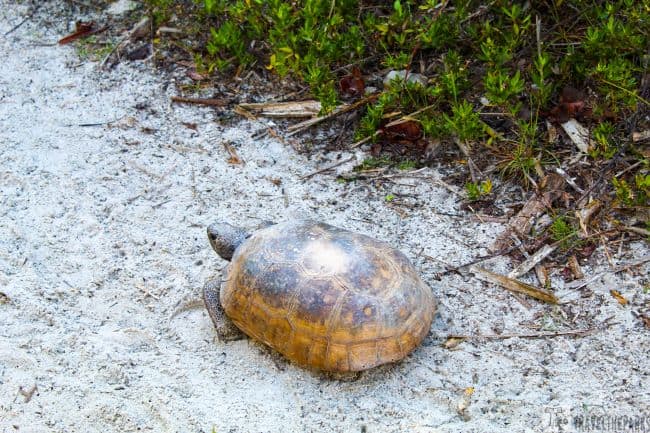
Fishing, birdwatching, and hiking are all available on the islands surrounding the dam. Consider kayaking or walking around the islands if you have the chance. Freshwater fish such as bass, catfish, and panfish were our favorite species to catch.
The recreation area also features a picnic area with tables and grills, as well as restrooms and a playground. The area is open year-round and is a popular spot for family outings and outdoor recreation.
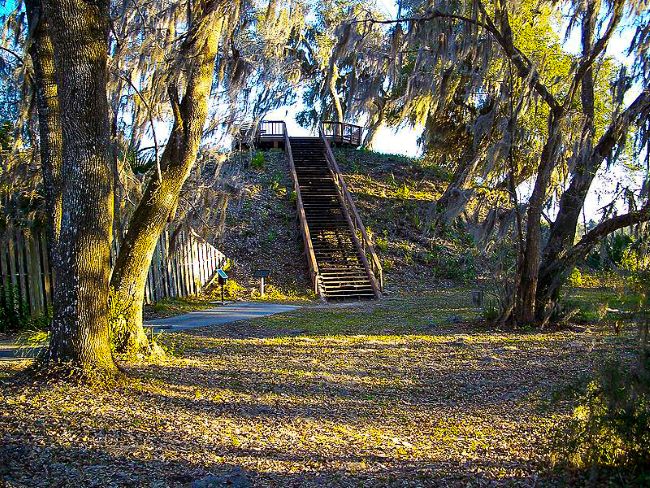
Crystal River Archaeological State Park: Unveiling the Mysteries of Florida’s Ancient Past
An unusual destination for anyone interested in Native American culture and history and outdoor recreation, Crystal River Archaeological State Park is a Florida State Park. A pre-Columbian Native American site dating back over 2,500 years is in the park. There are six earthen mounds at Crystal River Indian Mounds, the tallest of which stands at 28 feet.
In the region, indigenous peoples created primordial mounds for ceremonies and burials. Various Native American cultures occupied the site, including the Deptford, Swift Creek, and Weeden Island cultures.

Credit: Steven Martin CC BY-NC-ND 2.0
Apart from the mounds, the park has a museum featuring exhibits on Native American culture and history. Our walk through the visitor center included learning about ancient tools and techniques, as well as the local flora and fauna. Additionally, recreational activities include fishing, kayaking, and birdwatching. A picnic area and hiking trails are also available for visitors.
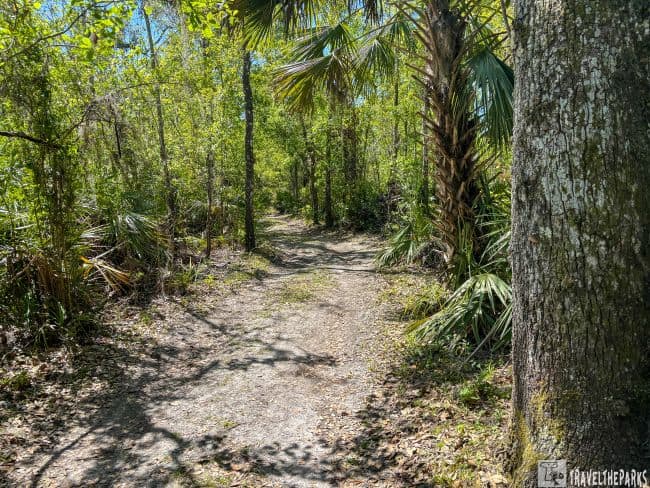
Potts Preserve Wildlife Management Area: A Hidden Gem for Nature Coast Enthusiasts
Citrus County’s Potts Preserve is an 8,300-acre nature preserve on CR-581 about 9-miles northeast of US-41. Sandhills, wetlands, and longleaf pine forests are among the habitats on the preserve, which provides habitat for a wide range of wildlife. In the early 1990s, the Southwest Florida Water Management District (SWFWMD) to protect groundwater recharge gained the land.
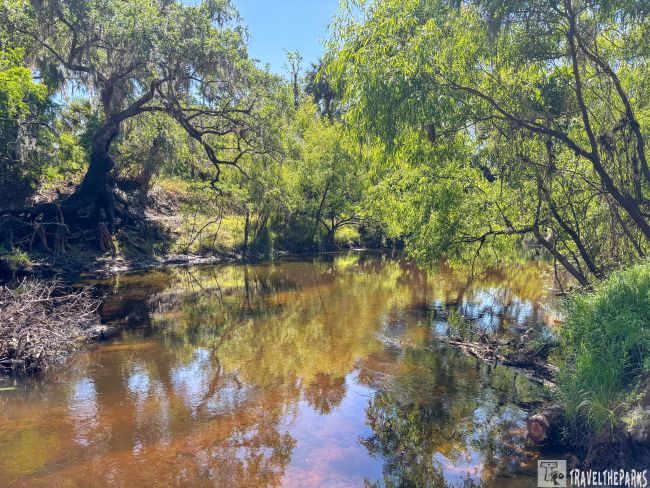
There are hiking trails, equestrian paths, birdwatching areas, and wildlife viewing areas. The preserve has over 30-miles of trails that wind through the different habitats. Visitors can see a variety of plant and animal species along the way. Trails on the western edge (Dee River Road) of the park are ventures through sandhills, pine forests, upland terrain. Whereas the eastern portion (Turner Camp Road) along the Withlacoochee River is wetlands and shady cypress hammock. The river access trail parking is off North Hooty Point Road. This is a 2-mile birding trail that follows the Withlacoochee River. The trail features several boardwalks that cross over streams and wetland areas. The preserve also has a nice fishing pier and several places where you can launch your canoe and kayak.

Escape the Crowds: Embark on a Journey of Exploration at Fort Cooper State Park
You can find Fort Cooper State Park near Inverness, Florida. The park covers over 700 acres and contains remnants of a historic military fort. We picked up our free guidebook on the Florida Seminole Wars Heritage Trail at the ranger station. Every day, there are exciting ranger programs offered by the park.
A colonel named James Cooper founded the fort. Soldiers constructed the first fort in 1836 during the Second Seminole War. While the Second Seminole War was raging, the base was used to protect injured and sick soldiers. To illustrate the fort’s significance in the conflict, a replica stands in its place today.
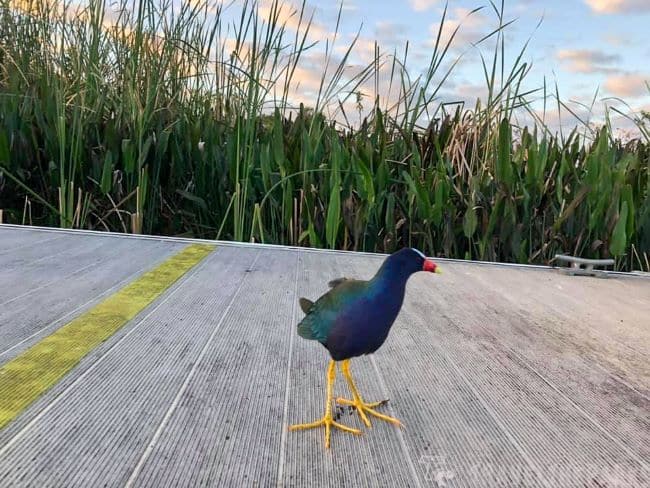
We trekked the Seminole Heritage Trail. It is a 1.5-mile trail that loops around scenic Lake Holathlikaha. Four interpretive displays tell the story of the Seminole people. A startled flock of quail in the underbrush was the only sound we heard this day.. In the park, easy to moderate self-guided trails meander through hammocks and sandhill natural communities. These include the Dogwood Trail, Fort Site Trail, and Sandhill Loop Trail.
Leave no Trace: It’s also important to stay on designated trails. Always follow park rules to help protect the preserve’s fragile ecosystems. When hiking in the park, bring plenty of water, insect repellent, and sunscreen..
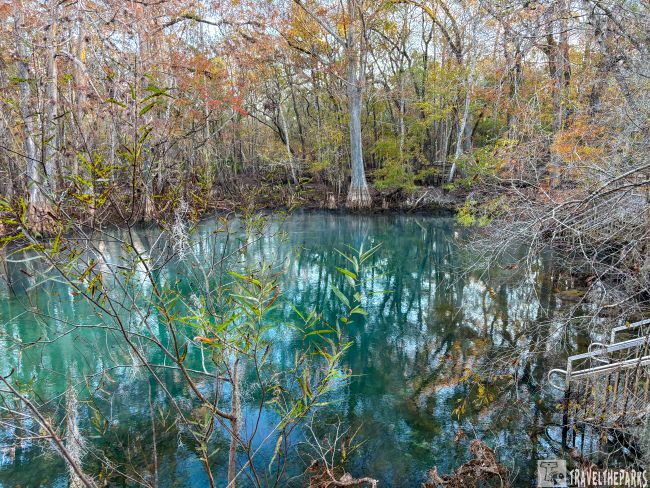
Peek into the Florida Nature Coast’s Scenic Springs at Ellie Schiller Homosassa Springs Wildlife State Park
The ancient Native American communities have been in Homosassa for thousands of years. Sawmills and fish camps converted the region into a fishing and lumber hub during the late 19th century. Tourists flocked to the clear blue-green waters of the springs and wildlife during the early 20th century. Glass-bottom boat tours became available in 1940, providing a glass-bottom look under the water.

Back in 1964, the state took over Homosassa Springs and turned it into a 210-acre state park to protect the spring and its wildlife. The 1980s saw some major restoration work that improved water quality and brought back native plants and animals. In 1989, the park was renamed in honor of Ellie Schiller for her key contributions. Nowadays, Ellie Schiller Homosassa Springs Wildlife State Park is home to the famous Fish Bowl, offers boat tours, fun animal interactions, and a bunch of educational programs. Plus, there’s a manatee rehab center, making Homosassa Springs Wildlife State Park a go-to spot for nature lovers and conservation fans all year round.
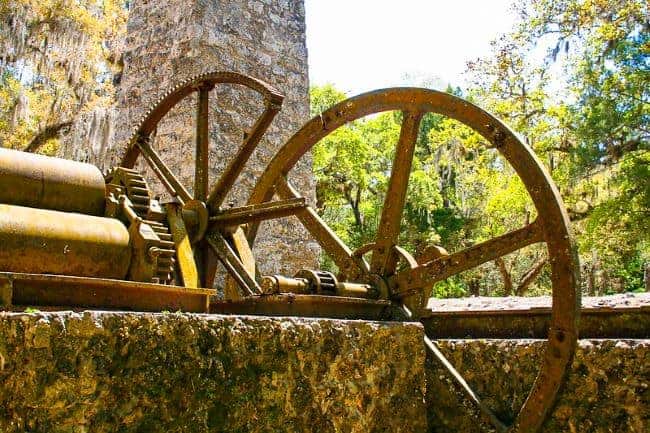
Unveiling Florida’s Industrial Past @ Yulee Sugar Mill Ruins Historic State Park
There are ruins of a 19th-century sugar plantation on 26 acres of land at this Florida State Park in Homosassa. A visit to Yulee Sugar Mill Ruins Historic State Park offers an insight into Florida’s past. It’s a great place to learn about the state’s history and natural environment, as well as to enjoy outdoor recreation.
A Florida politician and business owner named David Levy Yulee built the sugar mill in the 1850s. An important part of the local economy was the mill’s ability to process sugarcane from the surrounding plantations.
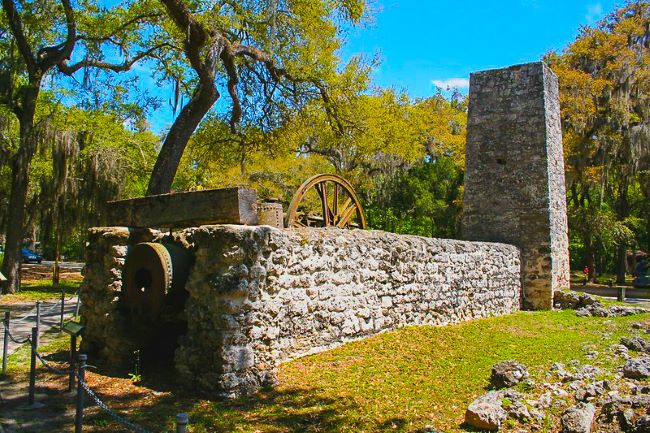
At the park, visitors can explore the sugar mill ruins and learn about the sugar industry in Florida’s history. It provides insight into the daily lives of the workers who lived and worked on the plantation through interpretive displays and guided tours.
A playground, hiking trails, and picnic areas are also at the park. Forest trails lead through a scenic forest where visitors can spot birds, reptiles, and mammals.
Step into the enchanting world of the Chassahowitzka National Wildlife Refuge
Founded in 1941, the Chassahowitzka National Wildlife Refuge is a protected area. It covers approximately 31,000 acres of coastal marshes, swamps, and uplands along the Gulf of Mexico. The U.S. Fish and Wildlife Service manages the refuge. It is an important habitat for a wide variety of wildlife species, including manatees, bald eagles, and various species of fish, reptiles, and birds.
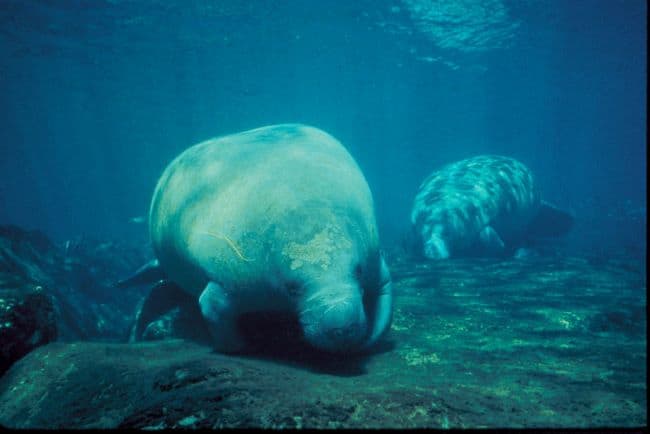
One of the unique features of The Chaz is its system of spring-fed rivers and creeks that flow through the area. These waterways provide important habitat for various aquatic species. They are also popular destinations for recreational activities such as kayaking, fishing, and wildlife viewing.

In addition to its natural beauty and recreational opportunities, the Chassahowitzka National Wildlife Refuge also serves an important conservation role. The refuge works to protect and restore the natural ecosystems in the area, which helps to preserve biodiversity and maintain healthy populations of wildlife.
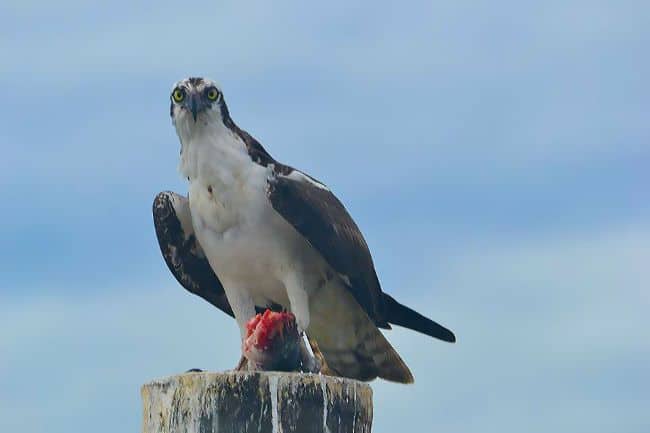
Glance into the Florida’s Magnificent Weeki Wachee Springs State Park
Weeki Wachee Springs State Park gets its name from the Seminole language, meaning “little spring” or “winding river.” Known for its crystal-clear water and iconic mermaid shows, the park sits atop one of the deepest underwater cave systems in the U.S., reaching over 400 feet deep.
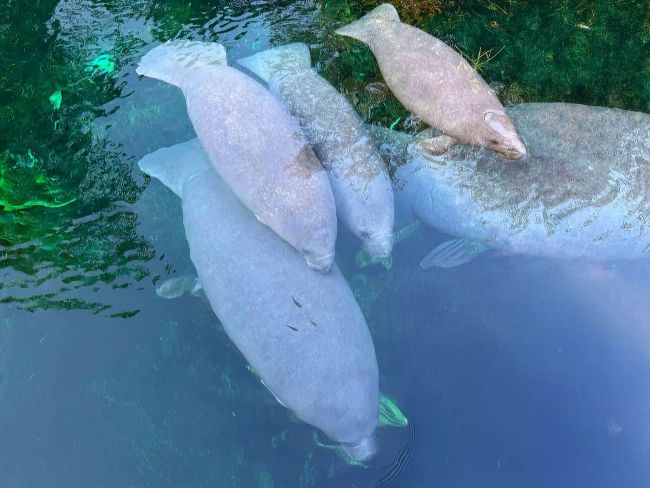
Weeki Wachee Springs State Park is the source of the Weeki Wachee River. The park offers swimming, kayaking, and canoeing, along with the famous mermaid performances that have wowed audiences since the 1940s. Visitors can also enjoy nature trails, wildlife exhibits, and educational programs focused on local ecology and history. With its unique blend of natural beauty and old Florida charm, Weeki Wachee remains a must-visit destination.
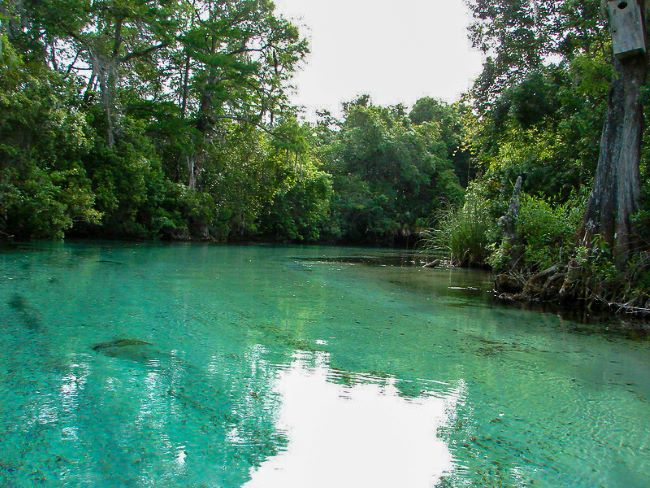
In addition to the mermaid shows and water activities, Weeki Wachee Springs State Park also offers nature trails, wildlife exhibits, and educational programs on the area’s history and ecology. The park is home to a variety of native Florida wildlife.
Weeki Wachee is a unique natural wonder that has captivated visitors for generations. Its crystal clear water, natural beauty, and mermaid shows make it a must-visit destination for anyone traveling to Florida.
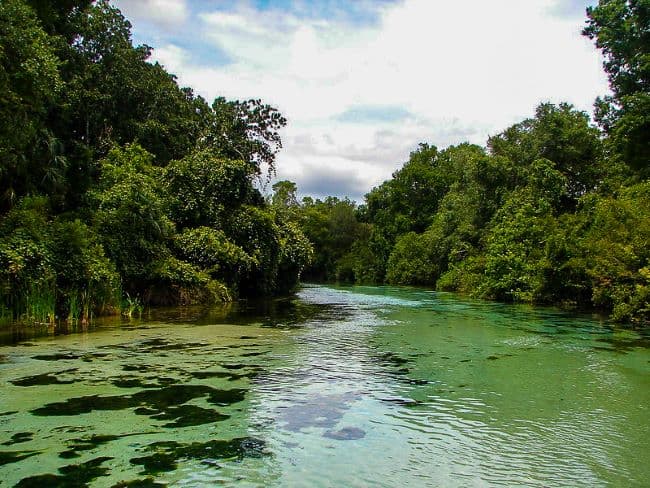
Final Thoughts: A Glimpse into the Past Florida’s Beautiful Nature Coast
Florida’s Nature Coast is home to some of the sunshine states most remarkable natural landscapes, including pristine beaches, crystal-clear springs, and dense forests. Visitors can explore these natural wonders through hiking, kayaking, fishing, and wildlife watching.
Throughout the Nature Coast, you’ll find a laid-back atmosphere and friendly locals who are proud of their community’s heritage and natural resources. It’s a great place to escape the hustle and bustle of city life and experience the beauty of Old Florida.
What is your favorite place to go on Florida’s Nature Coast? Have you been anywhere on this list? Where do you want to go on your next Florida Nature Coast road trip?

